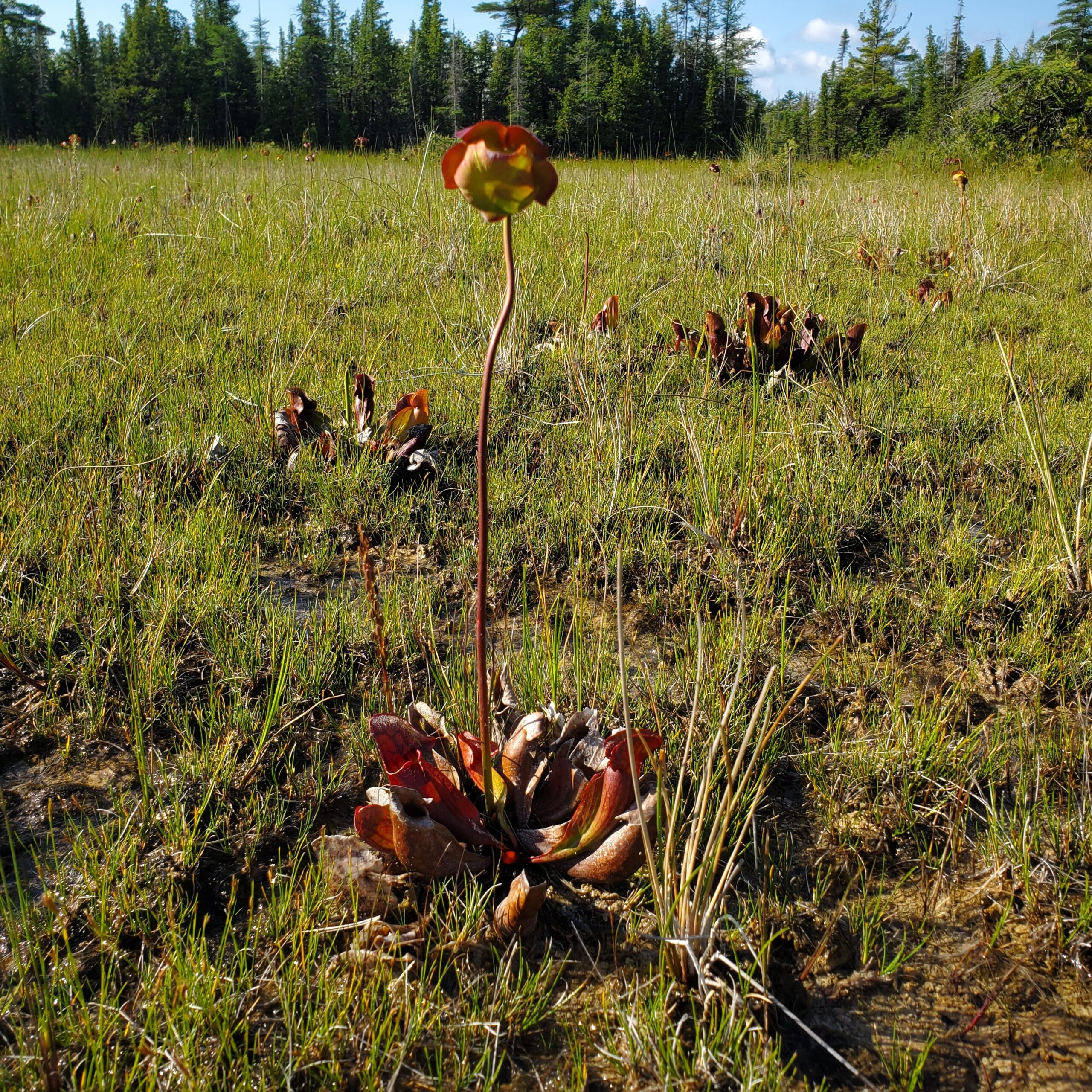Researchers Publish Database on Midwest Prairie Biodiversity – Technology Networks

Report on Midwest Prairie Biodiversity and its Alignment with Sustainable Development Goals
Introduction: Research Context and SDG Relevance
A comprehensive investigation by plant ecologists at the University of Illinois Urbana-Champaign has documented the significant biodiversity of historic Midwest prairies. The research highlights a critical disparity between this historical diversity and the species available commercially for ecosystem restoration. This report outlines the study’s findings, emphasizing their direct implications for achieving key United Nations Sustainable Development Goals (SDGs), particularly SDG 15 (Life on Land), SDG 13 (Climate Action), and SDG 2 (Zero Hunger).
Research Findings: A Disparity Between Historical and Restored Ecosystems
The RELIX Database: A Baseline for Historical Biodiversity
To establish a scientific baseline for native plant life, researchers developed RELIX, a new database documenting vascular plant species from 353 prairie remnants. These remnants represent small, relatively undisturbed patches of the original ecosystem.
- Prairies are among the most endangered ecosystems in the Midwest, with only 1% of the original tallgrass prairie surviving.
- The RELIX database centralizes data on thousands of plant species, providing a crucial reference for restoration efforts and contributing to the targets of SDG 15 (Life on Land) by documenting biodiversity for conservation planning.
Analysis of the Commercial Native Plant Market
The study conducted a thorough analysis of the native plant industry to understand the resources available for restoration projects, which are vital for the future of prairies, wetlands, and savannahs.
- Vendor Survey: Researchers documented plants sold by over 500 vendors in the Midwest.
- Seed Mix Analysis: The team cataloged the species composition of over 1,000 commercially available seed mixes.
- Biodiversity Gap: The analysis revealed a significant lack of diversity, with less than half of the region’s native plant species being commercially available for purchase.
- Species Bias: Commercially available seeds and plants disproportionately feature long-lived, hardy species, while more ecologically sensitive and “conservative” species are underrepresented. This directly impacts the ability to meet SDG 12 (Responsible Consumption and Production) by highlighting unsustainable production patterns in the restoration supply chain.
Implications for Sustainable Development Goals
SDG 15: Life on Land
The research underscores a critical challenge to halting biodiversity loss. The reliance on low-diversity commercial seed mixes for restoration projects creates ecosystems that are fundamentally different and less resilient than their historical counterparts.
- Reduced Ecosystem Quality: Restored ecosystems, shaped by commercial availability and a “typological mindset,” lack the full spectrum of species found in remnants, including those from adjacent forest and wetland habitats.
- Feedback Loop: Low-diversity restorations reinforce a simplified and inaccurate public perception of what a prairie ecosystem should be, hindering progress toward genuine biodiversity recovery as outlined in SDG 15.
- Habitat Loss: The lack of plant diversity directly translates to a reduced capacity to support a wide array of insects and other wildlife, as “diversity begets diversity.”
SDG 2 (Zero Hunger) and SDG 13 (Climate Action)
The study demonstrates how reduced plant diversity in restorations has cascading effects that compromise other critical sustainability targets.
- Threats to Food Security (SDG 2): An analysis of pollinator-specific seed mixes found a critical lack of early-blooming species. This creates a food gap for pollinators that emerge in the spring, threatening the stability of insect populations vital for pollinating food crops.
- Weakened Climate Action (SDG 13): The dense, deep root networks of diverse prairie plants are essential for ecosystem services. These roots store significant amounts of carbon underground, prevent soil erosion, and support complex soil microbiology. Less diverse plantings compromise these natural climate solutions and efforts to combat land degradation.
Recommendations and Future Directions
Translating Research into Actionable Restoration Practices
The research team aims to bridge the gap between scientific findings and on-the-ground results to improve the ecological outcomes of restoration projects.
- A curated list of 900 of the most common prairie species has been developed to help guide vendors and practitioners toward more diverse plantings.
- Future work will involve surveying restored prairies and comparing them directly to the remnant data in RELIX to quantify the success of current practices.
Strategic Enhancements for Restoration Projects
Based on the findings, the following actions are recommended to better align restoration efforts with biodiversity and sustainability goals:
- Diversify Commercial Offerings: The native plant industry should work to cultivate and supply a wider range of species, particularly those currently underrepresented.
- Support Pollinators: Restoration mixes must be supplemented with hardy, early-blooming species such as wild strawberry, golden alexander, and spiderwort to provide continuous food sources for pollinators.
- Expand Ecological Scope: Practitioners should move beyond a rigid definition of “prairie” and incorporate species that create a more complex and resilient ecosystem.
- Promote Overall Biodiversity: Increasing plant diversity is the foundational step to supporting more numerous and varied insect populations, which in turn provide food for birds, mammals, and other wildlife, directly addressing the biodiversity crisis targeted by SDG 15.
Analysis of Sustainable Development Goals in the Article
1. Which SDGs are addressed or connected to the issues highlighted in the article?
-
SDG 15: Life on Land
This goal is central to the article, which focuses on the degradation of terrestrial ecosystems, specifically Midwest prairies (“only 1% of tallgrass prairie… has survived”). The research aims to halt biodiversity loss and restore these ecosystems by creating a database (RELIX) of historic plant species to inform current restoration efforts. The article emphasizes that “plant diversity is the basis for overall biodiversity” and that preserving it is “critical to the overall health of our ecosystems.”
-
SDG 2: Zero Hunger
The article connects prairie biodiversity to food systems by highlighting the role of pollinators. It notes a “critical lack of early-blooming species” in commercial seed mixes, which means pollinators “might not find enough food to eat.” This is directly linked to food security, as the article states that pollinators are “vital for maintaining our food supply.” The discussion on maintaining the genetic diversity of native plant species also aligns with ensuring resilient agricultural systems.
-
SDG 13: Climate Action
The article links prairie restoration to climate change mitigation. It explains that prairie ecosystems, with their “deep, dense root networks,” are effective at carbon sequestration, as these roots “store carbon underground.” By promoting the restoration of diverse prairies, the work contributes to nature-based solutions for climate action.
2. What specific targets under those SDGs can be identified based on the article’s content?
-
Target 15.1:
“By 2020, ensure the conservation, restoration and sustainable use of terrestrial and inland freshwater ecosystems and their services…” The article directly addresses this by focusing on the restoration of prairies, one of the “most endangered native ecosystems in the region.” The entire project described is about understanding how to better restore these degraded ecosystems.
-
Target 15.5:
“Take urgent and significant action to reduce the degradation of natural habitats, halt the loss of biodiversity and, by 2020, protect and prevent the extinction of threatened species.” The research is a direct response to this target. The creation of the RELIX database is an action to understand and ultimately halt the loss of plant biodiversity in prairies. The article notes that restored ecosystems are “markedly less diverse than remnants,” and the research aims to reverse this trend.
-
Target 2.5:
“By 2020, maintain the genetic diversity of seeds, cultivated plants and farmed and domesticated animals and their related wild species…” The article’s analysis of the gap between historic plant diversity and what is commercially available speaks directly to this target. It highlights a “significant lack of biodiversity” in the commercial market, with “less than half of regional native plants… commercially available,” thus threatening the genetic diversity needed for effective restoration and ecosystem services like pollination.
-
Target 13.2:
“Integrate climate change measures into national policies, strategies and planning.” While not about national policy, the article promotes prairie restoration as a practical climate action. The mention that prairie roots “store carbon underground” and “prevent soil erosion” presents restoration as a strategy that integrates climate change mitigation and adaptation into land management practices, such as the Conservation Reserve Program mentioned.
3. Are there any indicators mentioned or implied in the article that can be used to measure progress towards the identified targets?
-
Indicators for Targets 15.1 and 15.5 (Ecosystem Restoration and Biodiversity)
- Proportion of remaining native ecosystems: The article provides a baseline indicator that “only 1% of tallgrass prairie across Illinois, Iowa, and Wisconsin has survived.” Progress could be measured by the area of prairie successfully restored.
- Species diversity in restored vs. remnant ecosystems: The core of the research is comparing the biodiversity of historic remnants (documented in the RELIX database) with modern restorations. The number and type of species present is a key indicator of restoration success.
- Diversity of insect and pollinator populations: The article implies that the variety and number of insects can be used as an indicator of ecosystem health, stating, “More plant species mean more diverse and numerous insect populations.”
-
Indicators for Target 2.5 (Genetic Diversity)
- Proportion of native plant species commercially available: The article provides a clear indicator by stating that “less than half of regional native plants were commercially available.” An increase in this proportion would indicate progress.
- Diversity within commercial seed mixes: The analysis of over 1,000 seed mixes revealed they “overemphasized certain plants at the expense of others.” The composition and diversity of these mixes, such as the inclusion of “early-blooming species,” serves as a direct indicator.
-
Indicators for Target 13.2 (Climate Action)
- Carbon storage in soil: The article implies that the amount of carbon stored in the soil of restored prairies is a key benefit. Measuring soil organic carbon in restored areas would be a direct indicator of the climate mitigation impact.
4. Table of SDGs, Targets, and Indicators
| SDGs | Targets | Indicators |
|---|---|---|
| SDG 15: Life on Land |
15.1: Conserve and restore terrestrial and inland freshwater ecosystems.
15.5: Halt biodiversity loss. |
– Percentage of original prairie ecosystem remaining (baseline of 1%). – Number and diversity of plant species in restored areas compared to historic remnants (RELIX database). – Abundance and diversity of insect and pollinator populations in restored prairies. |
| SDG 2: Zero Hunger | 2.5: Maintain genetic diversity of seeds and cultivated plants. |
– Percentage of native plant species available from commercial vendors (“less than half”). – Diversity of species in commercial seed mixes, including the presence of functionally important groups (e.g., early-blooming species for pollinators). |
| SDG 13: Climate Action | 13.2: Integrate climate change measures into policies and planning. | – Amount of carbon stored in the soil of restored prairie ecosystems. |
Source: technologynetworks.com

What is Your Reaction?
 Like
0
Like
0
 Dislike
0
Dislike
0
 Love
0
Love
0
 Funny
0
Funny
0
 Angry
0
Angry
0
 Sad
0
Sad
0
 Wow
0
Wow
0













































































